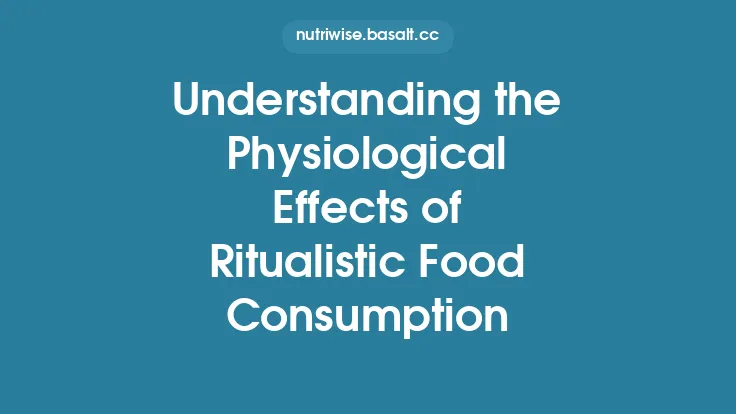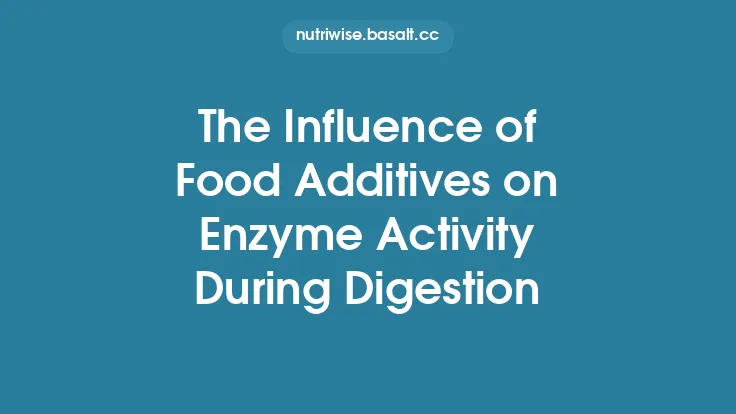The thermic effect of food (TEF), also known as diet‑induced thermogenesis, refers to the rise in energy expenditure that occurs after a meal is consumed. This increase is the body’s cost of processing, transporting, and storing the nutrients that have just entered the gastrointestinal tract. While the overall rise in calories burned is modest—typically accounting for about 5‑10 % of total daily energy expenditure—it varies markedly depending on which macronutrient(s) dominate the meal. Understanding these differences is essential for anyone looking to fine‑tune dietary strategies for weight management, metabolic health, or athletic performance.
What Drives the Thermic Effect of Food?
The TEF response is the sum of several physiologic processes:
- Gastric and intestinal motility – The mechanical work of peristalsis and the secretion of gastric juices require ATP.
- Nutrient absorption – Transporters in the intestinal epithelium move amino acids, monosaccharides, and fatty acids across membranes, a process that consumes energy.
- Biochemical conversion – Enzymatic pathways that break down macronutrients into absorbable units (e.g., proteolysis, glycolysis, β‑oxidation) generate heat as a by‑product.
- Storage and remodeling – Converting excess nutrients into glycogen, triglycerides, or lean tissue involves synthesis reactions that are energetically costly.
- Hormonal signaling – The release of gut hormones (e.g., GLP‑1, CCK, PYY) and the subsequent activation of the sympathetic nervous system add a modest thermogenic component.
Because each macronutrient follows a distinct cascade of these steps, the net TEF differs among proteins, carbohydrates, and fats.
Protein: The Highest Thermogenic Burden
Magnitude
Protein consistently produces the largest TEF, typically ranging from 20‑30 % of its caloric content. For a 100‑kcal serving of pure whey protein, roughly 20‑30 kcal are expended during digestion and metabolism.
Why It’s So High
| Process | Energy Cost | Explanation |
|---|---|---|
| Amino acid deamination | High | Removal of the amino group (producing ammonia) requires ATP and generates urea, a metabolically expensive waste product. |
| Transamination & synthesis of new proteins | High | Building new structural or functional proteins (e.g., enzymes, transporters) consumes considerable ATP. |
| Urea cycle | Moderate‑high | Converting ammonia to urea in the liver is an ATP‑intensive process (≈2 ATP per urea molecule). |
| Gluconeogenesis (if needed) | Moderate | Converting certain amino acids to glucose adds an extra ATP burden. |
Because of these steps, protein not only supplies building blocks for tissue repair and enzyme production but also imposes a substantial caloric “tax” on the body.
Practical Takeaway
Increasing the proportion of high‑quality protein in meals can modestly boost daily energy expenditure, which is why high‑protein diets are often recommended for weight‑loss protocols. However, the effect is modest in absolute terms and should be viewed as a complementary tool rather than a primary driver of calorie burn.
Carbohydrates: Moderate Thermogenic Response
Magnitude
Carbohydrates elicit a TEF of 5‑10 % of their caloric value. A 100‑kcal portion of glucose typically results in 5‑10 kcal of extra energy expenditure.
Key Contributors
- Glycolysis and glycogen synthesis – Converting glucose to pyruvate and then to glycogen in liver and muscle requires ATP (e.g., the conversion of glucose‑6‑phosphate to glycogen consumes one ATP per glucose unit).
- Transport across the intestinal wall – Sodium‑glucose linked transporters (SGLT1) use the sodium gradient, which is maintained by the Na⁺/K⁺‑ATPase pump, incurring an energetic cost.
- Insulin‑mediated processes – Insulin stimulates glucose uptake into muscle and adipose tissue, and the signaling cascade consumes ATP.
Complex vs. Simple Carbohydrates
While the TEF percentage is relatively stable across carbohydrate types, the rate of digestion can affect the timing of the thermogenic response. Rapidly absorbed sugars (e.g., glucose, fructose) cause a quicker, sharper rise in TEF, whereas slowly digested starches (e.g., whole grains) produce a more prolonged, modest increase.
Practical Takeaway
Carbohydrate‑rich meals contribute a modest thermogenic boost. Pairing carbs with protein can slightly elevate the overall TEF of the mixed meal, as the protein component drives the larger effect.
Fat: The Lowest Thermogenic Cost
Magnitude
Dietary fat generates the smallest TEF, generally 0‑3 % of its caloric content. For a 100‑kcal serving of olive oil, only about 0‑3 kcal are expended during processing.
Why It’s Low
| Process | Energy Cost | Explanation |
|---|---|---|
| Emulsification | Low | Bile salts and pancreatic lipase break down triglycerides, but the process is relatively efficient. |
| Absorption | Low | Fatty acids and monoglycerides diffuse across the intestinal mucosa with minimal active transport. |
| Re‑esterification | Low‑moderate | Reassembly of triglycerides in enterocytes and subsequent chylomicron formation uses some ATP, but far less than protein synthesis. |
| Storage | Low | Direct deposition into adipose tissue is energetically cheap; the main cost is the transport of chylomicrons via the lymphatic system. |
Because fats are already highly reduced (i.e., they contain many high‑energy carbon‑hydrogen bonds), the body does not need to invest much energy to extract their calories.
Practical Takeaway
While fat contributes the least to TEF, it remains a dense source of energy. In the context of weight management, the low thermogenic cost of fat means that caloric excess from fatty foods is more readily stored.
Mixed Meals: Interactions and Synergy
Real‑world meals rarely consist of a single macronutrient. When proteins, carbs, and fats are combined, the overall TEF is not a simple arithmetic average; several interactive effects emerge:
- Protein‑induced thermogenesis can “drag up” the TEF of accompanying carbs and fats. Studies show that adding 20 g of protein to a mixed meal can raise the total TEF by 2‑3 percentage points compared with a carbohydrate‑only meal of equal calories.
- Meal size matters. Larger meals produce a proportionally higher absolute TEF, even if the relative percentage stays within the typical range for each macronutrient.
- Meal timing and distribution. Consuming the same total calories in three moderate meals versus one large bolus can spread the thermogenic response throughout the day, modestly increasing 24‑hour energy expenditure.
Factors That Modulate the Thermic Effect
| Factor | Influence on TEF | Mechanistic Insight |
|---|---|---|
| Age | TEF declines with age | Reduced lean body mass and slower metabolic enzyme activity lower the energetic cost of nutrient processing. |
| Body composition | Higher lean mass → higher TEF | Muscle tissue is more metabolically active; protein turnover rates are greater in individuals with more muscle. |
| Physical activity level | Active individuals show a slightly elevated TEF | Post‑exercise glycogen replenishment and heightened protein synthesis increase the cost of handling nutrients. |
| Meal composition | Higher protein proportion → higher TEF | As detailed above, protein’s metabolic pathways are the most energy‑intensive. |
| Food processing | Whole foods → higher TEF than highly processed equivalents | Less pre‑digested foods require more mechanical and enzymatic work. |
| Gut microbiota | Certain microbial profiles can modestly affect TEF | Fermentation of indigestible fibers produces short‑chain fatty acids, which can stimulate mild thermogenesis. |
Measuring the Thermic Effect
Researchers typically assess TEF using indirect calorimetry, which measures oxygen consumption (VO₂) and carbon dioxide production (VCO₂) to calculate energy expenditure. The standard protocol involves:
- Baseline measurement – Resting metabolic rate (RMR) is recorded after an overnight fast.
- Post‑meal monitoring – Energy expenditure is tracked for 3‑5 hours after food ingestion.
- Calculation – TEF = (post‑meal EE – baseline RMR) × duration.
While laboratory measurements are precise, everyday practitioners can estimate TEF using the percentage ranges outlined above, adjusting for individual factors such as body composition and activity level.
Practical Applications
1. Weight‑Loss and Body‑Composition Planning
- Prioritize protein: Aim for 1.2‑1.6 g protein kg⁻¹ body weight per day to maximize TEF while preserving lean mass.
- Distribute protein: Consuming 20‑30 g of high‑quality protein each meal spreads the thermogenic benefit across the day.
- Mindful fat intake: Since fat has a low TEF, keep total dietary fat within energy‑balance goals, especially when total calories are limited.
2. Athletic Performance and Recovery
- Post‑exercise meals: Pairing carbohydrates with protein after training not only replenishes glycogen but also leverages protein’s higher TEF for additional calorie burn.
- Timing: Consuming a protein‑rich snack 2‑3 hours before sleep can modestly increase overnight TEF, supporting muscle repair without disrupting sleep.
3. Metabolic Health
- Thermogenic boost for older adults: Incorporating protein‑dense foods (e.g., legumes, dairy, lean meats) can counteract the age‑related decline in TEF.
- Fiber‑rich meals: While fiber itself has a low caloric value, its fermentation by gut microbes produces short‑chain fatty acids that can modestly raise energy expenditure.
Common Misconceptions
| Myth | Reality |
|---|---|
| “Eating more protein will dramatically increase daily calorie burn.” | Protein does raise TEF, but the absolute increase is modest (≈20‑30 % of protein calories). It should complement, not replace, a balanced diet. |
| “Fats have zero thermic effect.” | Fat does have a TEF, albeit low (0‑3 %). The effect is not zero, but it is the smallest among macronutrients. |
| “The thermic effect can offset large calorie surpluses.” | TEF accounts for only 5‑10 % of total daily energy expenditure; it cannot compensate for chronic over‑eating. |
| “All proteins are equal for TEF.” | High‑quality, complete proteins (containing all essential amino acids) tend to elicit a slightly higher TEF than incomplete plant proteins, due to more efficient utilization and lower need for deamination. |
Emerging Research Directions
- Nutrient timing and circadian rhythms: Early‑day protein intake may produce a larger TEF than the same protein consumed late at night, possibly linked to diurnal variations in hormone levels and enzyme activity.
- Personalized TEF profiling: Advances in wearable metabolic sensors could allow individuals to monitor their own post‑prandial energy expenditure, enabling fine‑tuned dietary adjustments.
- Microbiome‑mediated thermogenesis: Ongoing studies explore how specific bacterial strains influence the host’s TEF through production of metabolites that activate brown adipose tissue.
Bottom Line
The thermic effect of food is a small but measurable component of daily energy expenditure, and it varies substantially across macronutrients:
- Protein: 20‑30 % of its calories are expended during digestion and metabolism—the highest TEF of any macronutrient.
- Carbohydrates: 5‑10 % of calories are used, with the exact figure influenced by carbohydrate type and digestion rate.
- Fat: 0‑3 % of calories are burned, reflecting the low energetic cost of fat processing.
By understanding these differences, individuals can make informed choices about meal composition, timing, and portion size to modestly enhance their metabolic rate, support body‑composition goals, and maintain overall metabolic health. While TEF alone is not a magic bullet for weight control, it is a valuable piece of the broader nutritional puzzle—one that works best when integrated with balanced macronutrient intake, regular physical activity, and personalized lifestyle strategies.





